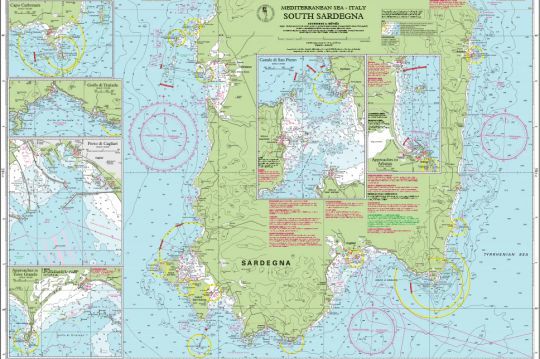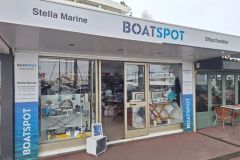A digital-driven transition
Imray, a historic player in the field of marine cartography, is putting an end to the production of its paper charts, a decision that marks a turning point in the history of navigation. This decision, prompted by the rise of digital tools, underlines an evolution in the habits of yachtsmen and marine professionals. For several years now, applications and electronic charts have offered a flexible alternative that can be updated in real time, meeting the expectations of modern navigation.
However, this transition to all-digital is not unanimously supported. Paper cards are still prized for their reliability and autonomy, particularly in the face of electronic failures. The fact that a respected publisher like Imray has stopped producing them raises the question of the balance between tradition and innovation.
Imray's specific features: a reference for yachtsmen
Since the 18th century, Imray nautical charts have been synonymous with quality and accuracy, aimed specifically at pleasure boaters. Unlike official English charts, often designed for the needs of commercial vessels, Imray products offer information tailored to the coastal areas popular with yachtsmen. Their practical format and annotations taken from navigation guides make them highly appreciated tools for worry-free cruising.

The end of their production highlights a problem for many sailors: where to find such a comprehensive and affordable alternative? With official chart prices set to rise in January 2025, yachtsmen could find themselves faced with an economic and practical dilemma.
Imray's future: pilot books and digital solutions
While Imray is putting an end to its paper maps, the company is not turning its back on its users. The brand intends to focus its efforts on digital products such as the "Explore with Imray" application, which brings together thousands of points of interest from traditional guidebooks. These tools aim to offer an enriched, interactive experience, combining practicality and technological innovation.
Coastal pilots, essential for stopovers and anchorages, will also continue to feature in their range. These books continue to be the benchmark for planning itineraries and exploring new destinations. This strategic repositioning could well mark the start of a new era for the publisher.
For sale! An opportunity for collectors and historians
The announcement of the end of paper map production also opens the door to the preservation of a historical legacy. Imray is offering potential buyers the opportunity to take over its cartography business, or to acquire the rights to its name. This approach could be of interest to maritime history enthusiasts, or those wishing to perpetuate the paper chart tradition in a more confidential or museum context.
Lovers of traditional navigation and collectors will have the opportunity to purchase the latest editions of these emblematic charts, which have become rare and precious objects.
The place of people in tomorrow's navigation
With the move towards digital solutions, the question of dependence on technology has finally arisen. In the event of failure or loss of signal, the paper chart remains an essential backup tool. Many sailors insist on the importance of maintaining this dual approach, combining traditional know-how and modernity.
The discontinuation of Imray cards illustrates a broader issue: how to guarantee safe navigation in an increasingly technological world? The balance between innovation and the preservation of human skills may well become a central issue for future generations. Navigators will have to decide whether to sail entirely digitally, or continue to carry a fragment of history with them on their adventures.








